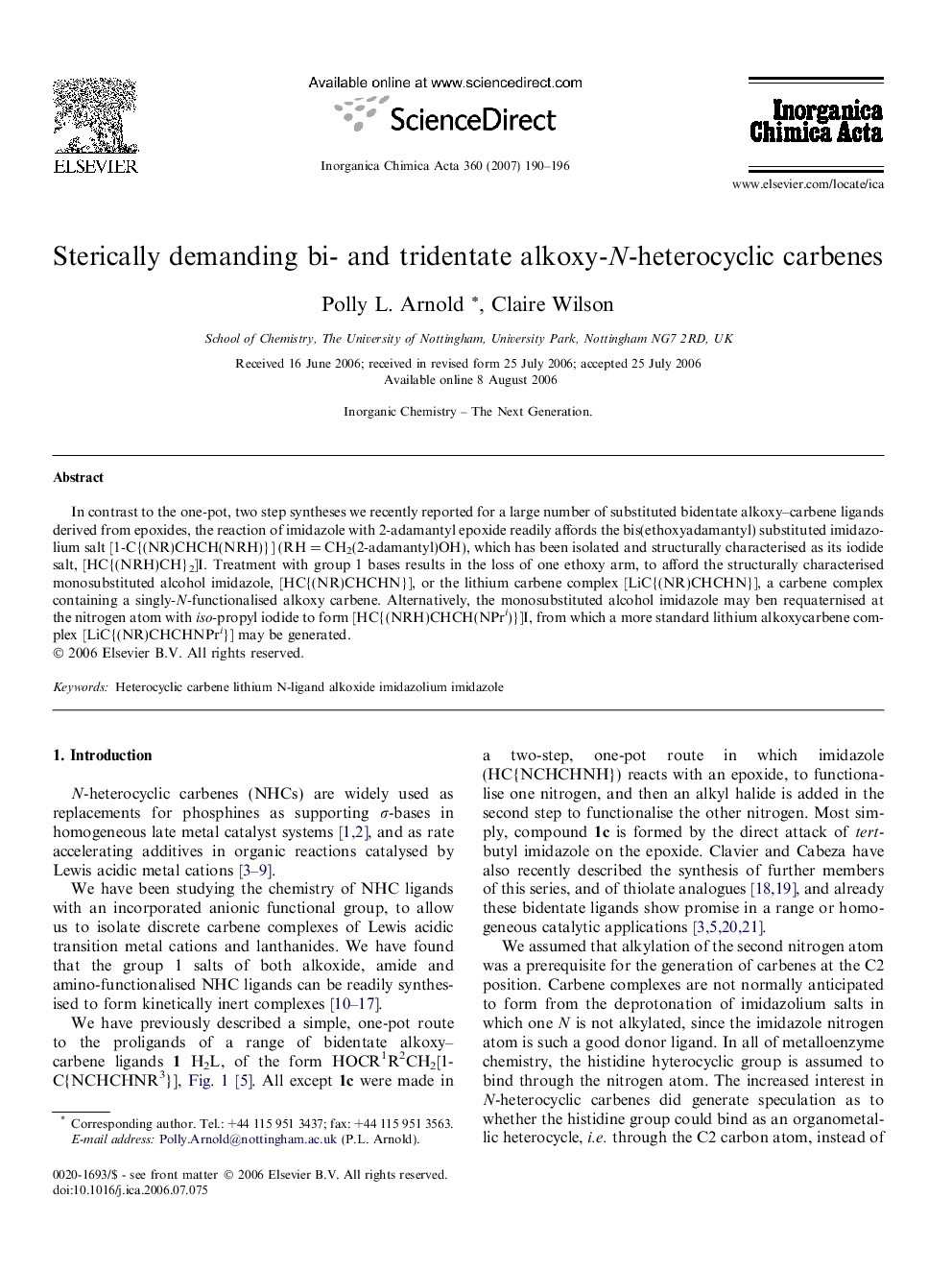| Article ID | Journal | Published Year | Pages | File Type |
|---|---|---|---|---|
| 1310839 | Inorganica Chimica Acta | 2007 | 7 Pages |
In contrast to the one-pot, two step syntheses we recently reported for a large number of substituted bidentate alkoxy–carbene ligands derived from epoxides, the reaction of imidazole with 2-adamantyl epoxide readily affords the bis(ethoxyadamantyl) substituted imidazolium salt [1-C{(NR)CHCH(NRH)}] (RH = CH2(2-adamantyl)OH), which has been isolated and structurally characterised as its iodide salt, [HC{(NRH)CH}2]I. Treatment with group 1 bases results in the loss of one ethoxy arm, to afford the structurally characterised monosubstituted alcohol imidazole, [HC{(NR)CHCHN}], or the lithium carbene complex [LiC{(NR)CHCHN}], a carbene complex containing a singly-N-functionalised alkoxy carbene. Alternatively, the monosubstituted alcohol imidazole may ben requaternised at the nitrogen atom with iso-propyl iodide to form [HC{(NRH)CHCH(NPri)}]I, from which a more standard lithium alkoxycarbene complex [LiC{(NR)CHCHNPri}] may be generated.
Graphical abstractThe bis(ethoxyadamantyl) substituted imidazolium salt [1-C{(NR)CHCH(NRH)}] (RH = CH2(2-adamantyl)OH), is isolated from the reaction between 2-adamantyl epoxide and imidazole. Treatment with group 1 bases results in the loss of one ethoxy arm to afford a monosubstituted alcohol imidazole, [HC{(NR)CHCHN}]. This can be converted to a lithium carbene complex [LiC{(NR)CHCHN}], despite the absence of N-alkylation on the imidazole, or more conventionally, the monosubstituted alcohol imidazole may be quaternised at the nitrogen atom, and converted into the more standard lithium alkoxycarbene complex [LiC{(NR)CHCHNPri}].Figure optionsDownload full-size imageDownload as PowerPoint slide
